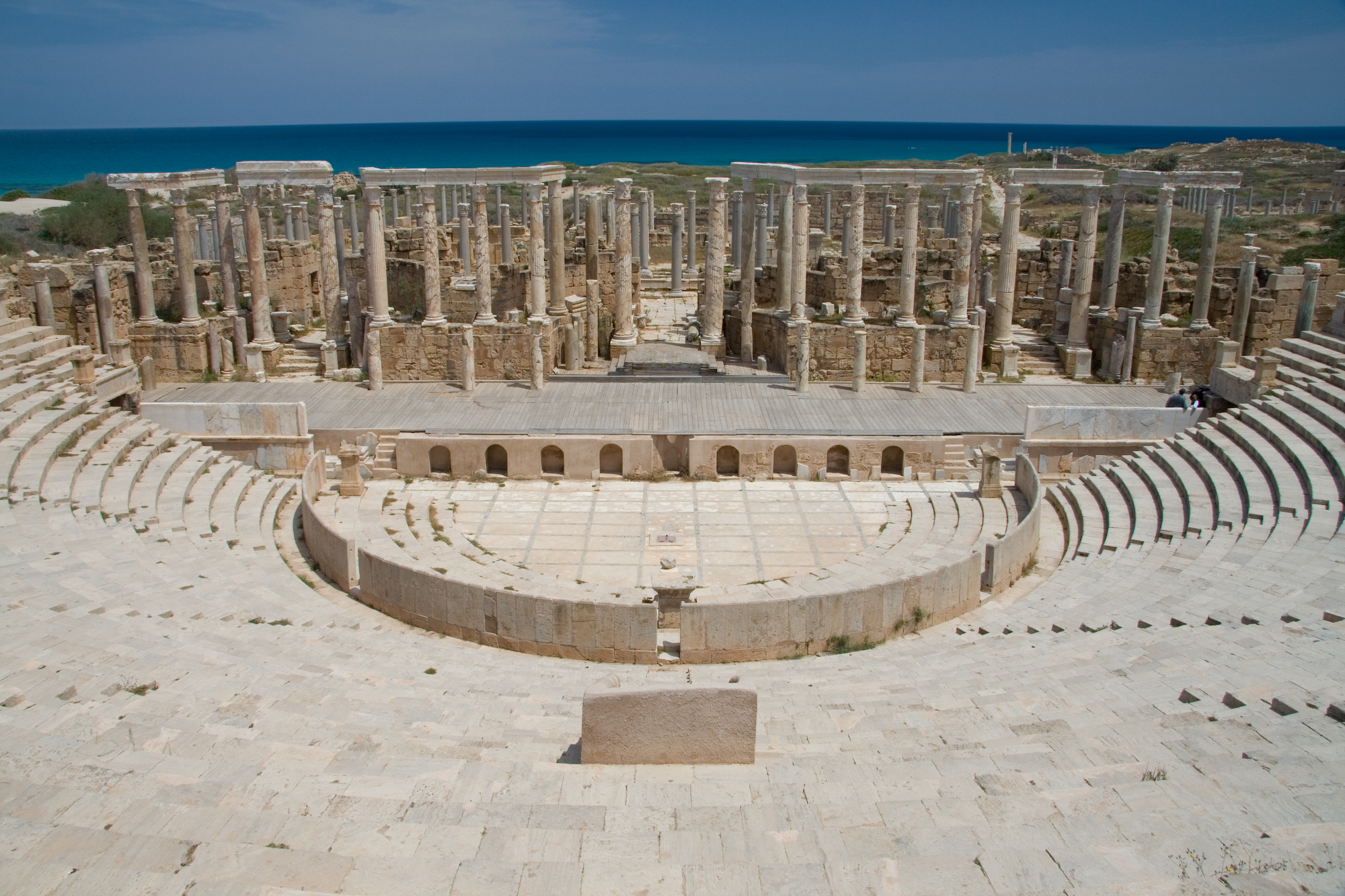A generalized map of the Sahara shows the location of the sample sites and the fossilized river courses. Credit: Anne Osborne
Posted on 10/15/2008 6:33:31 PM PDT by SunkenCiv
The widely held belief that the Nile valley was the most likely route out of sub-Saharan Africa for early modern humans 120,000 year ago is challenged in a paper published this week in the Proceedings of the National Academy of Sciences. A team led by the University of Bristol shows that wetter conditions reached a lot further north than previously thought, providing a wet 'corridor' through Libya for early human migrations. The results also help explain inconsistencies between archaeological finds... Well-documented evidence shows there was increased rainfall across the southern part of the Sahara during the last interglacial period (130-117 thousand years ago). The Bristol University team, with collaborators from the universities of Southampton, Oxford, Hull and Tripoli (Libya), investigated whether these wetter conditions had reached a lot further north than previously thought... The paper: 'A humid corridor across the Sahara for the migration of early modern humans out of Africa 120,000 years ago.' Anne H. Osborne, Derek Vance, Eelco J. Rohling, Nick Barton, Mike Rogerson, and Nuri Fello. PNAS has scheduled it for online publication on its Early Edition.
(Excerpt) Read more at bris.ac.uk ...
A generalized map of the Sahara shows the location of the sample sites and the fossilized river courses. Credit: Anne Osborne
The Scars of Evolution:"The most remarkable aspect of Todaro's discovery emerged when he examined Homo Sapiens for the 'baboon marker'. It was not there... Todaro drew one firm conclusion. 'The ancestors of man did not develop in a geographical area where they would have been in contact with the baboon. I would argue that the data we are presenting imply a non-African origin of man millions of years ago.'"
What Our Bodies Tell Us
About Human Origins
by Elaine Morgan
The Neandertal EnigmaFrayer's own reading of the record reveals a number of overlooked traits that clearly and specifically link the Neandertals to the Cro-Magnons. One such trait is the shape of the opening of the nerve canal in the lower jaw, a spot where dentists often give a pain-blocking injection. In many Neandertal, the upper portion of the opening is covered by a broad bony ridge, a curious feature also carried by a significant number of Cro-Magnons. But none of the alleged 'ancestors of us all' fossils from Africa have it, and it is extremely rare in modern people outside Europe." [pp 126-127]
by James Shreeve
Polygamy left its mark on the human genome
New Scientist | September 26, 2008 | Ewen Callaway
Posted on 10/03/2008 11:45:01 AM PDT by SunkenCiv
http://www.freerepublic.com/focus/chat/2096841/posts
Maori Men And Women From Different Homelands
ABC Science News ^ | 3-27-2003 | Adele Whyte
Posted on 09/06/2004 5:15:41 PM PDT by blam
http://www.freerepublic.com/focus/f-news/1208808/posts
Human populations are tightly interwoven
Nature | September 29, 2004 | Michael Hopkin
Posted on 09/30/2004 2:17:34 PM EDT by AZLiberty
http://www.freerepublic.com/focus/f-chat/1231661/posts
|
|
|||
Gods |
To all -- please ping me to other topics which are appropriate for the GGG list. |
||
|
· Mirabilis · Texas AM Anthropology News · Yahoo Anthro & Archaeo · · History or Science & Nature Podcasts · Excerpt, or Link only? · cgk's list of ping lists · |
|||
Not paying attention to the debate, huh?
I decided who I wasn’t voting for that DARK day in August. If I want to track things Out of Africa I’ll just follow the links...
Did you read this book? If so, how was it?
There’s a debate? ;’) Truth is, the only debate I’ve ever heard in entire was the 1960 debate, and that was from the audio library when in college (for a paper, I got the max for it, gullible lib prof). I watched most of one of the Ford-Carter debates. I’ve seen snips of other debates thereafter. I don’t think any such debates are worth two hoots and a damn, particularly for picking the President of the United States of America.
Nope, but it’s not too big, so I may have read a significant fraction of it. Around 1970, Morgan wrote the controversial “The Descent of Woman”. The main reasons for the controversy was the feminist bias throughout. Boiled down though, the view in that book is, the ancestral group was isolated from the rest of Africa, in what is now Ethiopia, by, hmm, must have been a body of water. And, certain features either pronounced in modern humans, or seen as unique, resulted from a period of aquatic living. The Todaro citation she uses isn’t to support an Asian origin, but rather to support the Ethiopian isolation idea she has championed. Anyway, probably worth a read.
I lived for a time in Libya - never saw an oasis though
The Lady Be Good
I like the aquatic ape theory, but agree that some of the critics have valid points.
Why is this author so worried about North Africa? Don’t all the markers imply a southeasterly jaunt towards Australia along the shore line?
Visited it?
The “markers” are all telling us what exists now. And that’s about all they can tell us.
It’s interesting how little is really known about routes and movements, and of course their chronology, and the identities of those making the trips.
Served in the Air Force. Was stationed at Wheelus Air Base outside of Tripoli when Qadafi Had his coup.
There are some nice ruins a stones throw from what used to be our Air Base.
Leptis Magna Tripoli Libya North Africa

Thanks.
Disclaimer: Opinions posted on Free Republic are those of the individual posters and do not necessarily represent the opinion of Free Republic or its management. All materials posted herein are protected by copyright law and the exemption for fair use of copyrighted works.